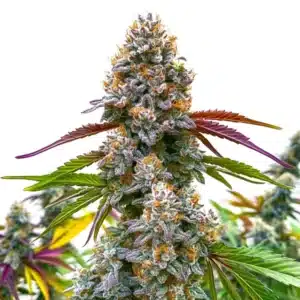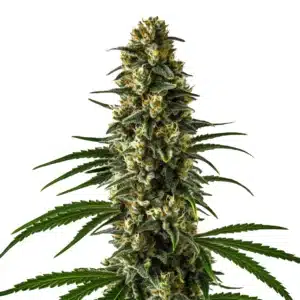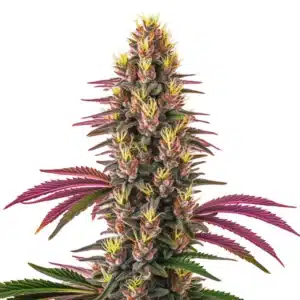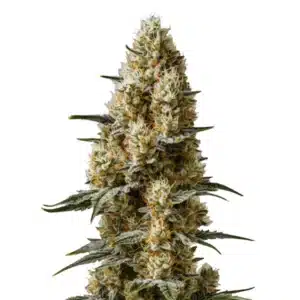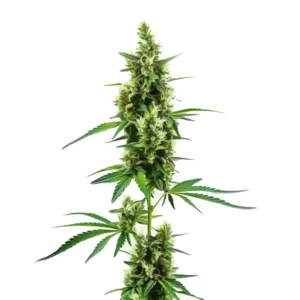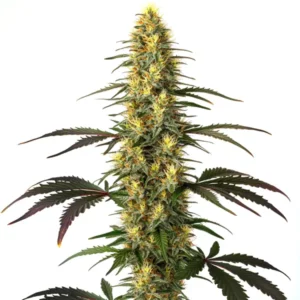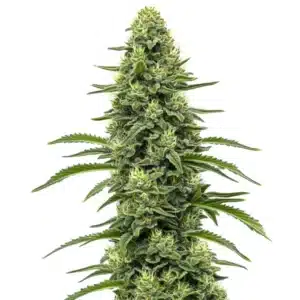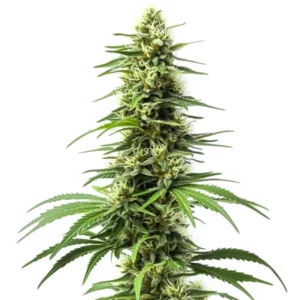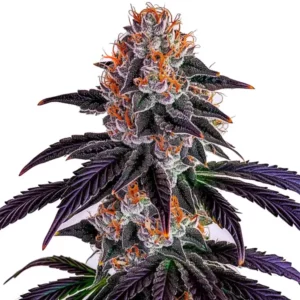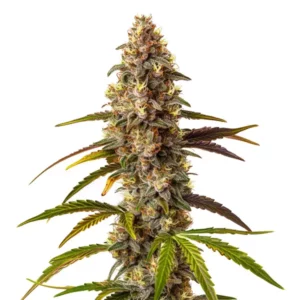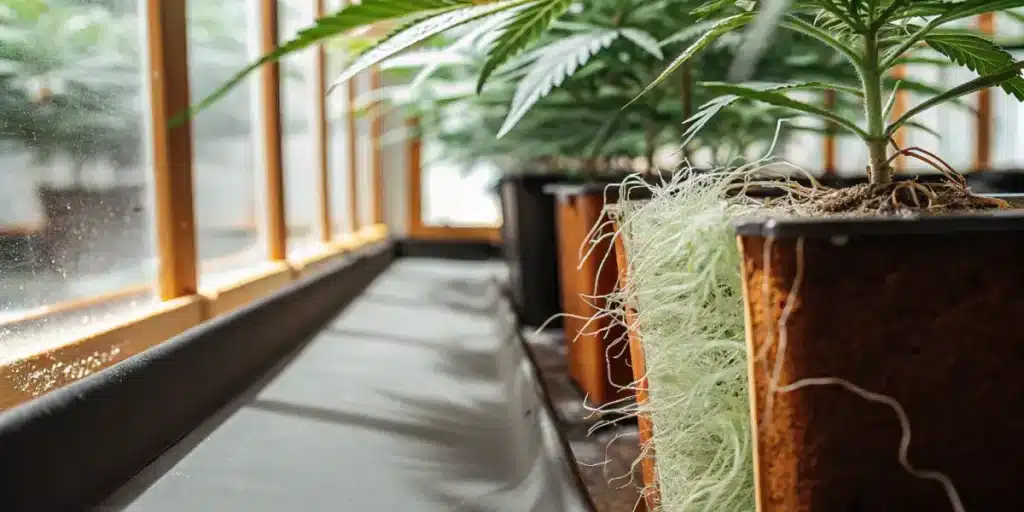
Optimizing Nutrient Assimilation in Cannabis
Optimizing nutrient assimilation in cannabis is crucial for both novice and seasoned growers. Why? It directly impacts the health and yield of your plants. Cannabis, like any other plant, requires a steady supply of nutrients to thrive. These nutrients must be absorbed efficiently for maximum benefit.
Enhancing nutrient absorption in cannabis cultivation involves knowing the needs of your plants. Nutrients should match the growth stage of the cannabis. For example, young plants may require more nitrogen, while flowering plants benefit from phosphorus and potassium.
Recommended Strains
Critical Daddy Purple
|
|
THC | 19% (Medium) |
|
|
Type | Feminized |
|
|
Yield | High |
|
|
Phenotype | 50% Indica / 50% Sativa |
Girl Scout Cookies
|
|
THC | 18% - 25% (Medium) |
|
|
Type | Feminized |
|
|
Yield | High |
|
|
Phenotype | 60% Indica / 40% Sativa |
Consider the environment where your cannabis grows. Factors like light, temperature, and humidity affect how nutrients are absorbed. A controlled setup can significantly improve cannabis nutrient uptake efficiency.
Maximizing Nutrient Delivery in Cannabis Growth
Maximizing nutrient delivery in cannabis growth involves precise control over the growing conditions. Start with a balanced nutrient solution. Use fertilizers designed specifically for cannabis, as they provide the right mix of macronutrients and micronutrients.
Cannabis strains like Blue Dream are known for their resilience and adaptability. These traits can be advantageous when optimizing fertilizer use in cannabis plants. Experiment with different nutrient concentrations to see what works best for your chosen strain.
Advanced techniques such as drip irrigation can further enhance nutrient delivery by ensuring a consistent and precise application of nutrients to the root zone. This method minimizes runoff and waste while maximizing the effectiveness of nutrient consumption.
Moreover, the introduction of technology, such as automated nutrient delivery systems, can assist in maintaining optimum nutrient levels. These systems adjust the nutrient concentration and pH in real-time, ensuring cannabis plants receive what they need for robust growth.
Strategies for Better Nutrient Assimilation in Cannabis
Strategies for better nutrient assimilation in cannabis should include regular monitoring of soil pH. Cannabis prefers slightly acidic soil, around 6.0 to 6.5 pH. Use pH meters to ensure soil conditions remain optimal.
Implementing a proper watering schedule is also key. Overwatering can lead to nutrient lockout, where roots cannot access the nutrients they need. Ensure the soil is moist but not waterlogged to improve cannabis nutrient uptake efficiency.
Optimizing nutrient assimilation in cannabis can also be achieved by utilizing bio-stimulants. These natural substances enhance plant metabolism, making nutrient uptake more efficient and boosting overall plant health.
Incorporating crop rotation or companion planting can also support nutrient assimilation. Different plants can contribute to soil health, improving nutrient availability and uptake for cannabis plants, thereby enhancing nutrient absorption in cannabis cultivation.
Promos & Deals
Choosing the Right Cannabis Strains
The choice of strain can significantly impact nutrient assimilation. Some strains are naturally more efficient at absorbing nutrients. Strains like Girl Scout Cookies offer robust growth and heavy yields, making them a popular choice among growers.
Each strain has unique nutrient requirements. Research the specific needs of your chosen strain to tailor your feeding schedule. For example, some strains may handle higher nutrient levels without experiencing nutrient burn.
When selecting strains, consider their adaptability to your growing conditions. Strains that are well-suited to your climate and environment will likely be more efficient in nutrient assimilation, reducing the need for constant adjustments.
It’s also important to consider the end goal of your cultivation. Whether you prioritize yield, potency, or flavor, choosing strains that align with your objectives can influence how you approach nutrient management and optimize fertilizer use in cannabis plants.
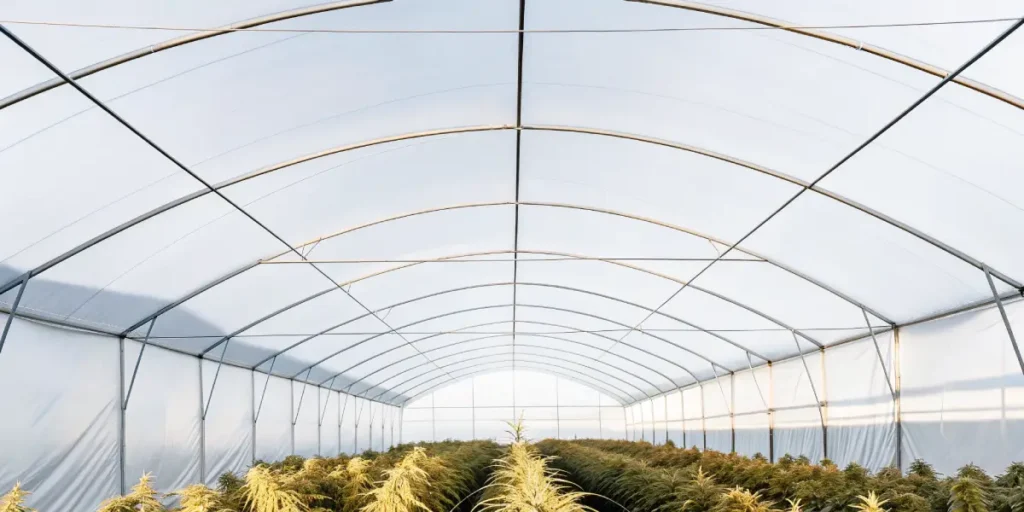
Improving Cannabis Nutrient Uptake Efficiency
Improving cannabis nutrient uptake efficiency often involves adjusting the growing medium. Hydroponic systems can offer more control over nutrient delivery compared to soil-based systems. In hydroponics, roots are in direct contact with the nutrient solution.
Strains like Critical Daddy Purple thrive in hydroponic setups. They can often achieve faster growth rates and higher yields due to the optimal nutrient availability.
To further enhance nutrient uptake efficiency, regular root pruning can promote a healthier root system. Trimming excess roots can reduce nutrient competition and improve overall plant vitality.
Additionally, using enzymes in your nutrient solution can help break down dead root matter and improve nutrient availability. This not only supports root health but also maximizes nutrient delivery in cannabis growth.
Common Nutrient-Related Issues and Solutions
Common issues such as nutrient lockout or deficiencies can hinder plant growth. Nutrient lockout occurs when plants cannot absorb available nutrients, often due to pH imbalances.
To resolve lockout, flush the growing medium with pH-balanced water to remove excess salts that may have accumulated. Once cleared, resume feeding with a balanced nutrient solution.
Nutrient deficiencies can manifest as yellowing leaves, stunted growth, or poor bud development. Address these issues promptly by adjusting your nutrient formulation or improving environmental conditions to support better nutrient uptake.
Consistent monitoring and diagnosis are essential to managing nutrient-related problems. Tools like EC meters can provide insights into nutrient concentration levels, helping you make informed adjustments to your feeding regimen.
Optimizing Fertilizer Use in Cannabis Plants
Optimizing fertilizer use in cannabis plants involves careful planning. Start with a lower concentration of nutrients and gradually increase as plants grow. This reduces the risk of nutrient burn, a condition where leaves turn yellow or brown due to excessive nutrients.
Utilize a feeding schedule that aligns with the plant’s growth stage. During the vegetative stage, focus on nitrogen-rich fertilizers. Transition to phosphorus and potassium-rich solutions during flowering for optimal results.
Consider employing slow-release fertilizers for a more consistent nutrient supply. These fertilizers release nutrients gradually over time, reducing the need for frequent applications and minimizing the risk of overfeeding.
Incorporating organic fertilizers can also optimize nutrient use. Organic options often contain beneficial microbes that support soil health, enhancing nutrient absorption in cannabis cultivation and overall plant growth.
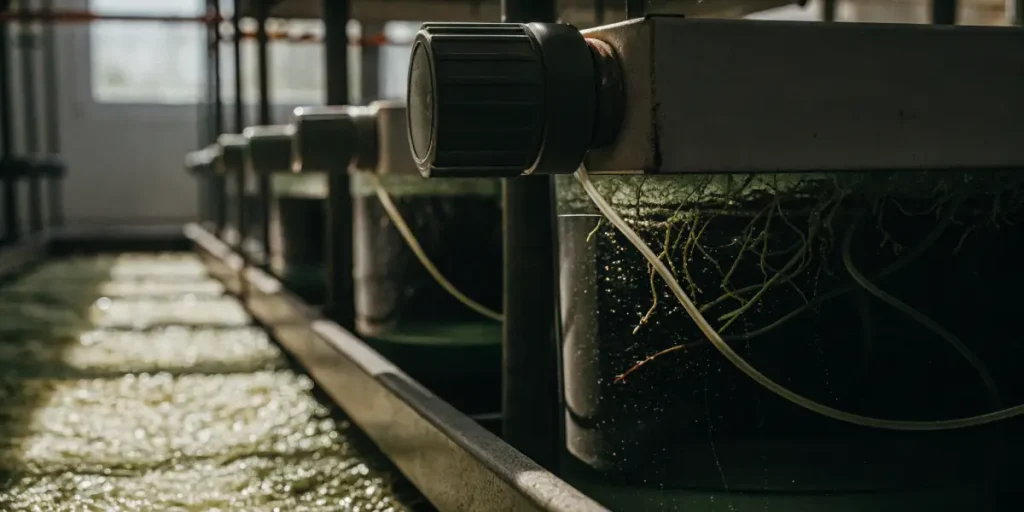
FAQs
What is the best way to enhance nutrient absorption in cannabis cultivation?
Enhancing nutrient absorption in cannabis cultivation starts with choosing the right growing medium. Soil, hydroponics, and aeroponics each have their unique advantages. Hydroponics, for instance, allows for direct nutrient delivery to roots, often leading to more efficient absorption.
Additionally, maintaining the correct pH level is crucial. Cannabis plants absorb nutrients most effectively in slightly acidic conditions. Regular pH testing of your water and soil ensures that nutrients remain accessible to plants.
Implementing a nutrient management plan that includes regular testing and adjustments can further support nutrient absorption. By knowing the specific needs of your plants, you can tailor your approach to optimize nutrient assimilation in cannabis.
Furthermore, ensuring adequate aeration in your growing medium can enhance root function. Well-aerated roots can more effectively absorb nutrients and water, leading to healthier plants and improved yields.
How do I improve cannabis nutrient uptake efficiency?
Improving cannabis nutrient uptake efficiency requires monitoring environmental factors like temperature and humidity. These affect the plant’s ability to absorb water and nutrients. Aim for a stable, controlled environment to support nutrient uptake.
Moreover, root health plays a vital role. Ensure roots have ample space to grow and are not waterlogged. Healthy roots mean better nutrient absorption and overall plant vitality.
Incorporating beneficial bacteria and fungi into your growing medium can enhance nutrient uptake. These microorganisms form symbiotic relationships with plant roots, facilitating the breakdown and absorption of nutrients.
Regularly rotating your crops can also prevent soil nutrient depletion, providing a fresh nutrient supply for each new cannabis cycle. This practice supports sustainable and efficient nutrient use over time.
Can foliar feeding maximize nutrient delivery in cannabis growth?
Foliar feeding can indeed maximize nutrient delivery in cannabis growth. This method involves applying nutrients directly to the leaves, allowing for rapid absorption. It is particularly useful when plants show signs of nutrient deficiencies.
However, foliar feeding should complement root feeding, not replace it. Use it as a targeted approach to quickly address deficiencies while maintaining a regular root feeding schedule.
For best results, apply foliar sprays during cooler parts of the day to reduce evaporation and ensure maximum nutrient uptake. This technique also minimizes the risk of leaf burn.
It’s essential to use a fine mist when applying foliar feeds to ensure even coverage. This approach allows for better absorption and minimizes the risk of nutrient runoff.
What strategies exist for better nutrient assimilation in cannabis?
Several strategies for better nutrient assimilation in cannabis include using chelated nutrients, which are more easily absorbed by plants. Chelates protect nutrients from reacting with other elements in the soil, keeping them available for plant uptake.
Additionally, incorporating beneficial microbes into your growing medium can assist in breaking down nutrients into more accessible forms. Products like mycorrhizal fungi can enhance root function and nutrient assimilation.
Regularly amending your soil with organic matter can improve its nutrient-holding capacity, ensuring a steady nutrient supply for your plants. This approach supports long-term soil health and fertility.
Experimenting with different nutrient formulations can help identify the best mix for your specific strains and growing conditions, leading to more effective nutrient assimilation and enhanced plant performance.
How does strain selection impact optimizing nutrient assimilation in cannabis?
Strain selection significantly impacts optimizing nutrient assimilation in cannabis. Some strains are naturally more efficient at nutrient uptake due to their genetic makeup. Selecting strains known for their resilience and adaptability can make nutrient management easier.
Researching and choosing strains that suit your growing environment and goals is vital. Strains like Blue Dream and Girl Scout Cookies are popular for their robust growth and high yields, making them ideal candidates for efficient nutrient assimilation.
Consider the genetic lineage of the strains you choose, as this can influence nutrient needs and overall plant behavior. Knowing the background of your strains can guide your nutrient management strategies.
Additionally, collaborating with other growers or joining forums can provide insights into optimal nutrient practices for specific strains, helping you refine your approach and achieve better cultivation results.


